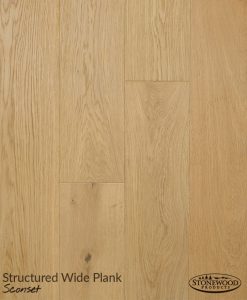Содержание

For example, the homeowners of PlayStation have an incentive to cut the price of the PlayStation itself. If they do, they know they will make will increase gross sales of licensed video games, and this enhance in income will offset the autumn in revenue from a cheaper price. However, if the price of Android Phones will increase, it’ll negatively have an effect on sales and due to this fact scale back demand for Android Apps. The relationship between sturdy complementary goods is very elastic.
Taking a trip to the grocery store to pick up peanut butter usually results in grabbing the strawberry or grape jelly to go along with it. If the price of peanut butter goes up and less people buy it, there is a strong chance that sales of jelly will also fall. A common example, but changing a little with newer technology, is the DVD player and DVD complement. When you get the new DVD player for Christmas, you usually are hoping for one of your favorite DVDs to go along with it.
In other words, these goods have no value when they are consumed alone. Coke and Pepsi, iPhone and Galaxy S series, Nike and Adidas a pair of complement good is are a few examples of substitute goods. If price of Coke increases, demand for Pepsi should increase because many Coke consumers will switch over to Pepsi.
The camera comes with an additional photo roll where the photo taken gets printed. Consumers may think that a camera that provides a snap instantly at only $40 may be a good deal, but there is a catch to it. The key difference is that substitute goods replace one another, whilst complementary goods add value to the other. Substitute goods are two goods that can be used in place of one another, for example, Dominos and Pizza Hut. By contrast, complementary goods are those that are used with each other.
Income Tax Filing
This implies that demand for a good increases when the price of another good increase, for example coffee and tea. A good with a low cross-price elasticity of demand is a complement to another good, while a good with high cross-price elasticity of demand is a substitute for another good. If the price increases, the demand for its substitutes will increase, while the demand for its complements will decrease. Complementary goods refer to a pair or set of goods that consumers often use together in consumption or production. In other words, these are products or services that people consume together so that the demand for one good is positively related to the demand for the other good.
Own The Knight Pills Jewish Ledger – Connecticut Jewish Ledger
Own The Knight Pills Jewish Ledger.
Posted: Thu, 12 Jan 2023 08:00:00 GMT [source]
They show complementary products to the one you are considering. Subtraction by counting forward is called complementary addition. The use of toothbrushes, for example, is not related to the consumption or use of motorcycles.
How to Determine If Two Goods Are Complements or Substitutes?
For example, peanut butter and jelly are complementary because consumers use them together to make a sandwich. The demand for peanut butter can increase the demand for jelly and vice versa. So, with the above discussion, it is quite clear that the change in the price of related goods has a great impact on the quantity demanded of the main product.
Ranking the NBA’s Most Disappointing Teams This Season – Bleacher Report
Ranking the NBA’s Most Disappointing Teams This Season.
Posted: Sat, 04 Mar 2023 05:45:27 GMT [source]
When consumed or produced together, it adds enhanced value to the offering. Two products are called complementary when each one shares a beneficial relation, for example, mobile phone and mobile cover. Both cannot exist alone, and thus each one plays a role in the value offering. Other examples include automobiles and fuel, mobile phones and cellular service, printer and cartridge, among others.
Effect of price change of complementary goods
https://1investing.in/ of a food or beverage triggers a target of eating its complements too. Drinking cola raises the ability of customers to pay for a cheeseburger. However, if the price of Android Phones increases, it will negatively affect sales and therefore reduce demand for Android Apps. If we take pancakes and maple syrup as an example – they are two complementary goods. It follows that demand for a product is to some extent depending on the worth of its complementary goods. Coke and Pepsi, iPhone and Galaxy S collection, Nike and Adidas are a few examples of substitute goods.
- A complementary good is a good that adds value to another, or, a good that cannot be used without each other.
- The following chart shows what happens to demand for two substitute goods, iPhone and Galaxy S, when the price of Galaxy S changes.
- So, somewhat than complement one another they turn into substitute goods.
- In other words, they are two or more goods that are used together.
- Independent goods are goods that are not dependent in any way on how the other good is used.
- Fresh or canned tuna and salmon are two of the most frequently found fish in sushi restaurants.
A content writer with a strong interest in writing and technology. Chandra is dedicated to writing useful, entertaining, and relevant information for readers, and he continues to develop content that connects and inspires them. Complementary goods can still function even without a pair of goods. Even without a keyboard, the laptop can still function properly because there are tools attached to the laptop itself.
Substitute and Complement Goods:
Overall, it is important to understand the concept of Substitute Goods when discussing market competition. Substitute goods are those which can be used in place of one another. In monopolistic competition, cross-price elasticity is the key difference between the two types of goods. Substitute goods offer a wide range of options to consumers in terms of brand, quality, price, etc. This allows the consumers to choose the Substitute good as per their needs and preference. As a result, it becomes one of the significant reasons for which Substitute goods are preferred over original goods.

Coke and Pepsi, iPhone and Galaxy S series, Nike and Adidas are a few examples of substitute goods. In this micro video on the theory of demand, we look at substitute and complementary goods. You will come across these when you cover cross price elasticity of demand in introductory microeconomics.
They often have better quality than the original good
An ideal example could be a sharpener and eraser given away with a box of pencils. Supermarkets will place related food items close to each other. The firm hopes to increase overall sales by suggesting possible related complementary goods. Thus the existence of two or more complementary goods is necessary to bring about the right balance.
As technology changes, so may the complements of particular goods and services. Now, consumers can use this device to stream movies and television shows, so a new complement good to these systems might be a streaming service, such as Netflix. In contrast to complementary goods, substitute goods are goods that are substitutes for other goods but still have the same function. Basic goods will not function optimally if there are no other items that make their functions run better. In terms of availability, complementary goods are very vulnerable to a decrease in function value if their partner is not available.

This means that these goods are needed jointly, to serve the purpose. Cross elasticity between two items will be zero when they are completely unrelated. In this write-up, you will get to know about the difference between complementary goods and substitute goods.
Complement goods also commonly called complementary goods are usually used or consumed together with other goods. This product with substitute products usually has a striking difference. In the process of certain activities, there are good things in the form of goods and services that have value in buying and selling. Usually, you can find this product or item around your neighborhood. This item will be useful if you use it in conjunction with other items or a pair. The demand for a complementary good depends on the demand for the primary product/service.
If product A is dependent on product B, product A is a complementary product. Without a partner, complementary products can still function properly. When the change in the price of one good affects the change in demand for another product, it is a cross-elasticity of demand. We all know that demand for a product is mainly affected by its price, but there are some other factors which can also affect its demand.
Complementary Goods in Economics: Definition & Examples
Cross Elasticity Of DemandCross Price Elasticity of Demand measures the relationship between price and demand. Similarly if the price of one good rises and consequently reduces its demand, it would scale back the demand for the complementary product as properly. In economics, a complementary good or complement is a good with a unfavorable cross elasticity of demand, in distinction to a substitute good.
Examine the economic impact this will have on the market for wheat. Substitute goods, for instance, tea and coffee are independent of each other, i.e. they can individually capable of satisfying a particular want. As against, complementary goods, for example, bread and butter, are interdependent on each other, which means that they are used along to satisfy a particular want. On the other hand, goods that are used by the consumer together and are of no use when consumed alone, are called Complementary Goods.
Therefore, if the a pair of complement goods is falls for one of the goods, the demand for that good is expected to rise and the same effect happens to the complementary good. Complementary goods are different from substitute goods, which are used in place of each other. On the other hand, substitutes are such goods that can be used in place of each other. In other words, if a price increase for one product leads to a rise in demand for a related good, then the two goods are called substitutes.
 Avatud: E-R: 10:00 - 18:00
L: 10:00-15:00 P: Suletud
Avatud: E-R: 10:00 - 18:00
L: 10:00-15:00 P: Suletud 
